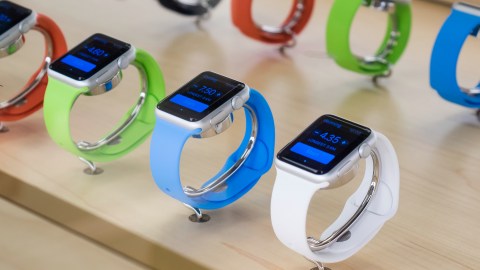Hospitals Giving Out Apple Watch to Aid Cancer Treatment

When I first heard about the Apple Watch, I wasn’t sold. Now, after a massive commercial rollout and major word-of-mouth hype, I’m still skeptical. Even if the price (upwards of $349) weren’t an issue, you wouldn’t see me with the awkward-looking watch-phone hybrid around my wrist.
But the beauty of the market is that it makes room for consumers’ varying tastes and needs. For some, the Apple Watch is a stylish status symbol, and for others, it could even be an essential piece of medical equipment. King’s College Hospital in London has begun a pilot program that provides the watches to chemotherapy patients. A British medical company, Medopad, has been building apps designed to help cancer patients keep track of their medication usage.
“Patients forget to take the drugs or lose them. There are also many unnecessary visits to [emergency medical services] because doctors don’t have access to that information,” said the CEO of Medopad, Dr. Rich Khatib.
For patients, the design of the Apple Watch provides advantages over the typical smartphone. With the ability to wear the device on their wrist at all times, patients would be less likely to forget about using the apps provided. Additionally, patients dealing with illness, or loss of energy and strength, would benefit from the ease of access.
Not only are the Apple Watches convenient for patients and doctors, but also they could cut costs tremendously.
“After the treatment is over, another patient can use the Apple Watch so it could work out at £50 per patient. When you compare that to chemotherapy treatments and the fact that one pill could cost £1,000 per day, it’s worth it,” said Dan Vàhdat of Medopad.
It remains to be seen whether the pilot program will be effective, but the mere ideas behind the effort should get doctors, patients, and technology geeks excited. Smartphones, tablets, and other cutting-edge devices are often thought of as toys, providing mindless entertainment that replaces genuine human interaction. But these pieces of technology aren’t just for playing Candy Crush during math class; they increase our standard of living, facilitate improved communication, and can even save lives.
Read more at HIT Consultant, and watch our interview with James Currier on information management in health care.





